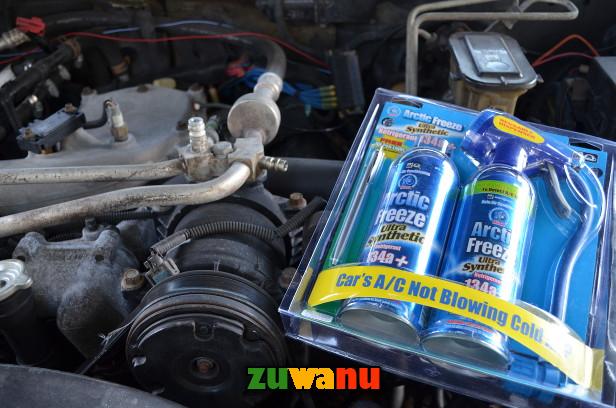Car AC Gas Refill in Nigeria: A Comprehensive Guide, Procedure, and Cost Analysis in 2023

Introduction:
As the tropical climate prevails in Nigeria, having a fully functional and efficient car air conditioning (AC) system is not just a luxury but a necessity for a comfortable driving experience. Over time, the refrigerant gas in car AC systems may deplete, leading to reduced cooling efficiency. To address this issue, car owners often seek a car AC gas refill. This article provides a comprehensive guide on car AC gas refill procedures, considerations, and the prevailing costs in Nigeria.
Importance of Car AC System Maintenance:
The car air conditioning system plays a crucial role in ensuring a pleasant and comfortable interior environment for both the driver and passengers. Besides providing cool air during hot weather, the AC system also helps in maintaining optimal visibility by reducing humidity inside the car. Regular maintenance, including periodic AC gas refills, is essential to keep the system in peak condition and extend its lifespan.
Car AC Gas Refill Procedure:
Performing a car AC gas refill involves adding refrigerant gas to the system, restoring its cooling capacity. While the process might seem straightforward, it is essential to follow the proper steps to ensure optimal results and prevent damage to the AC components. Below is a step-by-step guide on how to refill the car AC gas:
- Assessment of AC System:
Before starting the refill process, it is crucial to assess the current state of the AC system. Check for visible leaks, inspect the compressor, and ensure that other components are in good condition. - Identify Refrigerant Type:
Different cars may use different types of refrigerants. It is important to identify the specific refrigerant required for your vehicle. Common refrigerants include R134a and R12, with R134a being more widely used in modern vehicles. - Gather Necessary Tools and Equipment:
To perform a car AC gas refill, you will need specific tools and equipment, including a refrigerant gauge, hoses, and the refrigerant itself. Ensure that the equipment is in good condition to avoid any mishaps during the process. - Locate Low-Pressure Port:
The AC system has two ports – high-pressure and low-pressure. The low-pressure port is used for refilling the refrigerant. Consult your vehicle’s manual or seek professional advice to locate the low-pressure port in your car. - Connect Refrigerant Gauge and Hose:
Attach the refrigerant gauge and hose to the low-pressure port securely. This allows you to monitor the pressure and control the flow of refrigerant during the refill. - Start the Car and Turn on the AC:
Start the car’s engine and turn on the AC to its maximum setting. This ensures that the refrigerant is circulated throughout the system. - Add Refrigerant:
With the AC running, slowly add the refrigerant to the system using the refrigerant gauge. Follow the manufacturer’s guidelines regarding the amount of refrigerant required for your specific vehicle. - Monitor Pressure:
Keep a close eye on the pressure gauge throughout the process. Overcharging the system can lead to damage, so it is essential to add the correct amount of refrigerant. - Check for Leaks:
After completing the refill, inspect the AC system for any signs of leaks. Use a UV dye if necessary, as it can help identify leaks under UV light. - Final Assessment:
Once the refill is complete, assess the AC system’s performance. Ensure that the air blowing from the vents is cold, indicating that the refill was successful.

Considerations for Car AC Gas Refill:
While the car AC gas refill process seems straightforward, there are several considerations and precautions that car owners should keep in mind:
- Professional Assistance:
While some car owners may opt for a DIY approach, it is highly recommended to seek professional assistance for AC system maintenance. Certified technicians have the expertise to diagnose issues accurately and perform the refill safely. - Refrigerant Compatibility:
Ensure that the refrigerant used is compatible with your car’s AC system. Using the wrong type of refrigerant can lead to damage and may require costly repairs. - Leak Detection:
Before refilling the AC gas, it is crucial to detect and repair any existing leaks. Adding refrigerant without addressing leaks is a temporary solution and may result in further issues. - System Flush:
In some cases, a complete system flush may be necessary, especially if the AC system has been contaminated or if the refrigerant type is being changed. A system flush helps remove any residual contaminants. - Environmental Impact:
Car owners should be aware of the environmental impact of refrigerants. Some refrigerants, such as R12, are ozone-depleting substances and are being phased out globally. Choosing environmentally friendly options, such as R134a, is recommended. - Regular Maintenance:
Instead of waiting for the AC system to malfunction, consider regular maintenance to prevent issues. This includes cleaning or replacing the AC filter and checking the overall condition of the system.
Car AC Gas Refill Cost in Nigeria:
The cost of a car AC gas refill in Nigeria can vary based on several factors, including the type of refrigerant used, the brand of the refrigerant, and the location of the service provider. As of the latest available information, the average cost for a car AC gas refill in Nigeria ranges from 3000 to 4500 Naira per can, depending on the brand of the refrigerant.
- Type of Refrigerant:
The type of refrigerant used significantly influences the cost of a car AC gas refill. R134a is the most commonly used refrigerant in modern vehicles and is generally more affordable than older refrigerants like R12. - Brand of Refrigerant:
Different brands offer refrigerants with varying price points. Some brands may be known for their quality and reliability, while others may be more budget-friendly. Car owners should inquire about the available brands and their reputation before opting for a specific refrigerant. - Service Provider Location:
The geographical location of the service provider can also affect the cost of a car AC gas refill. In urban areas or regions with higher living costs, service providers may charge slightly more for their services compared to less populated or rural areas. - Professional Service vs. DIY:
Opting for professional AC service from certified technicians may incur additional labor costs. However, it ensures that the refill is performed correctly and reduces the risk of errors or damage to the AC system. DIY enthusiasts may save on labor costs but should carefully follow guidelines to avoid mistakes. - Additional Repairs:
If the AC system requires additional repairs, such as fixing leaks, replacing components, or conducting a system flush, the overall cost of the service will increase. Car owners should be prepared for potential additional expenses based on the condition of their AC system.
Conclusion:
In conclusion, maintaining a properly functioning car air conditioning system is vital for a comfortable driving experience, especially in Nigeria’s warm climate. A car AC gas refill, when done correctly, can restore the cooling efficiency of the system and enhance overall driving comfort. While some car owners may choose the DIY approach to save costs, seeking professional assistance is advisable to ensure the proper diagnosis and safe execution of the refill process.
The cost of a car AC gas refill in Nigeria varies based on factors such as the type
and brand of refrigerant, the location of the service provider, and whether additional repairs are needed. As of the latest information, the average cost ranges from 3000 to 4500 Naira per can of refrigerant. Car owners should prioritize regular maintenance, address leaks promptly, and choose environmentally friendly refrigerants to promote the longevity of their car’s AC system and minimize its impact on the environment.

Leave a Comment